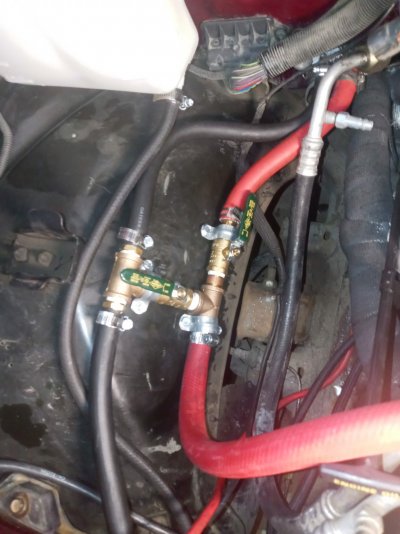The one that's not in the supply hose from engine to heater.
I can't tell how the system is plumbed from that photo. I'd need to see the other ends of the hoses that aren't in the picture. Kinda thinking the red one goes to the front of the intake manifold, and the black one to the radiator.
If that's the case, the valve between the red and black hoses does nothing useful. If it's closed, it could just as well be removed along with the "Tees". If it's open, (as shown in the photo) it's short-circuiting coolant flow through the radiator core. That would make the cooling system less efficient because all the coolant going through that valve DOESN'T go though the radiator core. Important? Maybe not. That coolant flow would have gone through the heater core and into the radiator "cool" tank anyway, based on the OEM routing. Point is, it's extra expense and extra complexity, and a lot more potential leak-points that serves no useful purpose. (You wouldn't need ANY of this, if the air doors in the air-delivery system sealed properly.)
Failing that, all you actually needed was one valve, two hose-barbed-to-pipe-thread fittings, and two hose clamps. Secure to the fender as desired. All the rest is just dead weight.
In MY driveway, I'd not have used unshielded worm-gear clamps because they're hard on the hoses and promote hose damage.
Example: Fuel pump hose with unshielded worm gear clamps and their alternative.
You must be registered for see images attach
I'd have used smaller, proper-sized clamps for the hose diameters.


